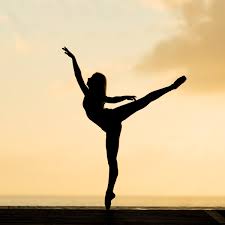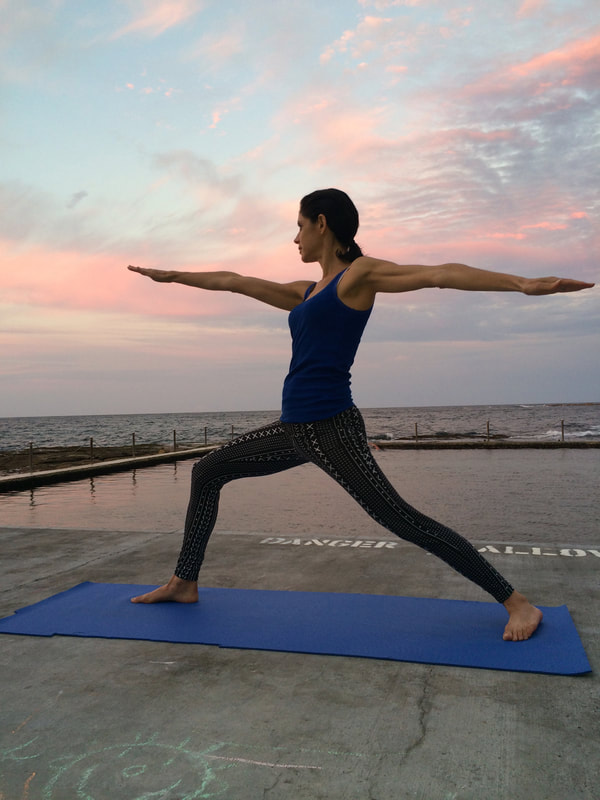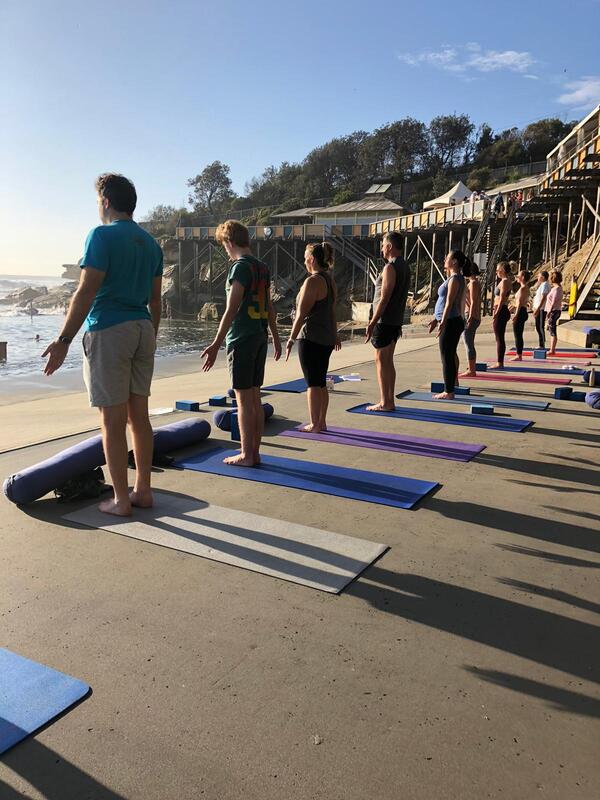|
MINDFUL IN MAY
Throughout May, I have continued to practice a daily 10 to 20 minutes of mindful meditation - for me, meditation set up a foundation for being more grounded and present in all my thoughts words & actions. The benefits of the 10 mins practice are cumulative including: - reduced stress - learning to communicate more calmly - managing difficult emotions - anger, fear and anxiety - greater focus and clarity - increased presence in your life INCREDIBLY & REWARDING HARD WORK... There is no doubt that mindful meditation is incredibly HARD work....It is almost impossible to sit in stillness. It took 6 months of connecting to a guided soothing voice to give me permission to be still and accept whatever thoughts and emotions were going on. The mind is extremely busy and it is always a struggle to achieve a deep sense of relaxation. Yoga, through its asana (movement) and pranayama (breath work) is a tool to release the agitation in the body, by connecting mindful movement and breath. As the layers of tightness, tension and stress are released, in a practice, space is created in the body and in the mind. EMOTIONAL ENERGY RELEASE Mindful in May experts have revealed to me how the body holds emotional energy - in the heart we hold sadness, in the belly we hold fear and in the jaw & throat we hold anger and are silenced from expressing our true creative yourself. This science aligns to the ancient wisdom of the Chakra energy wheels (the essence of Yogarama classes). NEW MINDFUL BEGINNING Now is the time, to invite in the practice of 10 mins of mindfulness - invite a new beginning. Start TODAY ... with our mindful meditation on-line and/or in person and continue the practice daily...
0 Comments
15/5/2022 0 Comments CHAKRA DANCE - HEALING MOVEMENT Dance movement to music can be freeing and healing to the body and mind - particularly when it holds excess stress and tension. At Yogarama Retreats in the bush, we shared a freeing dance movement as the sunset - retreaters wore blindfolds or some simply closed their eyes for a full hour of free movement - each mindful movement feels great in the body, Chakradance™ is a well-being movement practice that uses spontaneous dance, to specific chakra-resonant music, for the purpose of healing and re-tuning your whole mind-body-spirit energy system. Similar to other free-flowing dance programs the benefits include better relationships, improved confidence, and self-esteem, inspired creativity and the freedom to express yourself. At the heart of Chakradance is the music and the beat. For all of us, the seven major chakras are the energetic gateways through which body, mind and spirit come together, literally embodying the soul. The full moon is a wonderful time to release energy so downlaod the FREEDOM Chakra dance MP3 below and get some movement flowing in your body aligned with the next powerful full moon... Although dancing has not been my thing since I was a teenager - the type of yoga dance is a free-flowing meditative yoga experience that I am so pleased to share with you - women of all ages from - particularly those like that have not put on their dancing shoes for many decades. You are invited to download a free gift - the FREEDOM Chakra dance music and get some movement flowing in your body... EMAIL ME: to request the MP3.
Why Is Sleep Important?
Sleep is sooo important because it can help us physically heal, recover from illness, deal with stress, solve problems, consolidate memories, and improves motor skills. A good night’s sleep isn’t just about how many hours of sleep you get, but also the quality of that sleep. There are two essential kinds of sleep: non-rapid eye movement sleep (NREM) and rapid eye movement sleep (REM).
There are many ways that yoga can help improve the quality of sleep:
Yoga and Insomnia Insomnia is the inability to fall asleep or stay asleep. Insomnia can have many long-term effects, including daytime sleepiness and impairment, memory loss, and mood changes. Studies have demonstrated that yoga can be beneficial in managing sleep problems such as insomnia. Yoga can especially benefit particular groups of people with insomnia, such as postmenopausal women and women with breast cancer. What Types of Yoga Help You Sleep? There are many types of yoga that provide health and wellness benefits. During the day, any type of yoga practice is appropriate, so long as the user is comfortable. High-activity forms of yoga, such as vinyasa or hot yoga, are a good type of moderate to high exercise. Such exercise, when done at least several hours before bedtime, can help you sleep better at night. Since high-activity yoga forms elevate the heart rate, it’s best to avoid these practices right before bedtime. People who wish to practice yoga nearer to bedtime will find a slower and restorative type of yoga more suitable:
Poses done before bedtime should encourage the body to relax and sleep. Recommendations among yoga instructors and physicians vary, but the following poses are commonly suggested:
If you have concerns about your yoga practice, consult a yoga teacher for a private session or a clinician. Remember that yoga is not a substitute for medical treatment. In the event of persistent sleep disturbances or other concerns, consult your physician to develop a treatment plan. Yogarama is doing our part to help make your sleep serve you. Sleep Week is 13-19 March 2022  Chronic inflammation is something you want to avoid long-term. At the 2021 Global Yoga Therapy Conference, I learned how a regular yoga & meditation practice can reduce chronic inflammation, that underlies so many modern day conditions from irritable bowel syndrome to eczema to heart disease. The Science Behind Inflammation Inflammation is actually an essential defense mechanism - its a protective process to ensure an infection or injury can be dealt with. It typically lasts a short while and is referred to as acute inflammation, where the body then returns to a state of balance. The immune system sends out signaling molecules to the site of issue and this signaling initiates an inflammatory response to promote the removal of the issue and healing. Unlike acute inflammation, chronic inflammation can cause more harm than good. A prolonged inflammatory response is often due to factors relating to our diet and lifestyle. Chronic Inflammation underlies many modern day diseases In our modern world, chronic inflammation is most commonly caused by our intake of sugar, alcohol and preservatives, our exposure to toxins in food and the environment and infections and sedentary behaviours. These factors put pressure on the body's systems. They cause imbalances and increase the damage and injury within the body’s tissue. Weeks, months and even years of damaging activities cause inflammation to continue. It's purpose is to repair the damage in your body, but this level of inflammation may be too much and certain body systems may become dysfunctional as a result. We may not see the consequences of this low level of persistent inflammation for some time, until a body system can no longer perform its optimal function because of it. That’s when disease sets in and the symptoms start to show. Sometimes the symptoms can be mild and affect a non-essential body system. Other times it affects a critical organ, with severe and dangerous accompanying symptoms. This type of chronic inflammation can cause heart disease or autoimmune disorders like irritable bowel syndrome, eczema, hormone imbalances, even forms of arthritis where inflammation begins to destroy otherwise healthy tissues in the body system. In summary inflammation is a necessary and essential defence and repair process of the body in the short term, but can result in chronic disease if left unchecked. The good news Managing inflammation can help you achieve optimal health. The good news is there are plenty of diet and lifestyle changes along with therapies, including yoga therapy, that can be implemented at any age to reduce the impact of inflammation in your life. Reach out if you would like to know more about the benefits of yoga and meditation to help reduce conditions related to chronic inflammation. email: [email protected] To all Yogis... Be Safe Be Well Be Happy Be at Peace From India's Ganges River to Sydney's Wylies Baths -
A yoga & meditation Ritual India is a spiritual and healing place for me. Having travelled through India with a group of nine adventurous and bold women in 2017, I returned in 2019 to an Ayurveda healing retreat where I spent 10 nourishing days in Rishikesh India with like-minded yogis. It is devastating to hear how many people in India including the yogis I met, are suffering from the COVID pandemic. On international yoga day I am calling on the Yogarama community to support the people in India the birthplace of yoga. Swami Ji is an experienced & inspiring yoga teacher trainer and has taught thousands of yogis world-wide online to practice and teach yoga during COVID. My sister, Monica, became a yoga teacher during COVID in gratitude to Swami. He has an amazing team in Rishikesh and we hope these funds supports them too. INTERNATIONAL YOGA DAY Fundraiser for INDIA From India's Ganges River to Sydney's Wylies Baths yoga & meditation ritual: FUNDRAISER EVENT IS LIVE ON-LINE 1200 pm Sunday 20th June 2021 - from Rishikesh to Wylie's Baths 1200 pm Monday 21st June 2021 - International Yoga Day - On-Line 0600 pm Monday 21st June 2021 - International Yoga Day - On-Line (Repeat) EVENT SCHEDULE: 1155 am Set yourself up in a comfy space in your own home 1200 pm: Welcome and Introduction 1205 pm Swami Ji, D'vine yoga - Integrating yoga in daily life through asana & pranayama. 1210 pm Pranayama - shining breath 1215 pm Asana - movement meditation 1255 pm Svasana - rest and meditation 0110 pm Wrap up by Daniella 0115 pm Close and Thank you This event is honouring the birth place of yoga, India. Yogarama is hosting a fundraiser for India to help support those suffering from the COVID pandemic. From the Ganges River in Rishikesh to Wylie's Baths, Sydney our yogi, Swami. Ji will lead us in an uplifting yoga class for all, from beginners to experienced. Swami Ji is an experienced yoga teacher trainer and has taught thousands of yogis world-wide online to practice and teach yoga during COVID. He will be leading the class on Zoom. Please make your donation and find your sacred space on the mat at home on zoom or at Wylies Baths with the Yogarama community. Bookings are essential and donations are encouraged. Funds donated will provide medical supplies to those in India in need. Clinical Trials Support Health Benefits of Yoga & Meditation - New Podcast Series
 Give someone you care about a special xmas gift of your presence - a precious present and it costs nothing! With silly season upon us, I believe it’s important to prioritise your presence, over presents. With the COVID pandemic related stress and the stress of the silly season, you may find yourself worrying about your health, your finances, your loved ones, or your sense of security. These concerns are all valid and they’re shared by millions of other Australians. Worry and stress can seriously distract from the here & now. I’m here to help you manage your stress to stay healthy and happy and mindfully present. How to Mitigate Stress and Manage Symptoms It's important to know the impacts of stress: Acute stress, or short-term stress is brought on by one specific event, increases your heart rate and tenses your muscles. Our fight-or-flight system kicks on and helps us through short-term stressors, such as the acute stress giving you the energy to get to the hospital in an emergency like a broken arm. Chronic stress affects you over months or even years. It can cause painful muscle tightness and headaches, hormonal shifts, lowered immunity, gastro-intestinal disruptions, and changes in libido as well as psychological issues like anxiety, depression, and burnout. There is evidence that chronic stress may serious impact your health. It leads to chronic conditions such as depression, anxiety, obesity, diabetes, psoriasis, irritable bowel syndrome and more.” The best advice I can give is to eat healthily, do regular exercise like gentle yoga and cardio workout, meditate & continue to keep a healthy distance to stop the pandemic spread. All of this can have positive impact on your overall physical and mental health. Stress management tips: Try to understand why you feel stressed and figure out what you can do to decrease that sense of stress. Pay attention to yourself as a whole human, not just as someone who deals with stress. Stress should not affect you giving plenty of self-care to yourself (take a hot bath, walk in nature) or seek care from others. Don’t forget to stay connected. Even though many of us are still physically separated from friends and family, lean on support groups around you, including your family, friends, and fellow chronic warriors. They can provide the comfort of a listening ear and a shared experience, and remind you that as difficult as this is, we’re all in it together. Simon
With an open heart, I farewell the beautiful yoga studio in Sydney where I first trained to be a yoga teacher. As Sukha Mukha, closed down this week, it was the end of an era and the beginning of a new one as my passion for teaching others yoga & meditation continues to grow. My burning desire to be a yoga teacher began in my early twenties however my life took a curly path until 2013, when I had a family, full time work with two children including a blossoming and challenging teenage girl. I fell ill from too much of everything… Yoga was my retreat into a peaceful world. My teaching journey began with teaching my friends from my home and in a few studios. By serendipity, I was swimming in the Coogee ocean pool early one morning before work and noticed yoga on the deck. I asked if I could teach in this space and from there the wonderful love story teaching yoga outdoors by the ocean has continued. Since then, I've loved every yoga and meditation course that I have completed and met so many inspiring teachers along the way that have shaped me into the teacher I am today. For me, the most important part of teaching yoga is the journey, no outcomes, pure acceptance and no judgement of the experience that unfolds for each individual students. I am so grateful to all the teachers that have inspired and supported me on my journey ... My Teachers Idit- Hefer (Sukha Mukha), Katie Rose (formerly Manistas), Connie McNamee (Wylie's Baths, yoga teacher) Simon and Biance, Synergy Yoga Sydney Sal Flynn, yoga therapist and mindfulness guide, Sunita Patil meditation teacher, Jasmine Tarkesh, Laughing Yoga founder and teacher (San Fransisco) Beth Borowsky Karma Kids yoga, Timothea Goddard, Mindful-Based Stress Reduction (MBSR) program, Patrick Kearney, Vipashna meditation teacher Satbir Singh Kahlsa, Harvard Medical School professor yoga & meditation & researcher Margaret & Glenn Ceresoli, Iyengar (YogaMind), The Art of Living, The Happiness Program and The Art of Meditation Course Sheryl Simantov, Soul of India Safari – travel partner to India Sanjay Sarasvati and his mum (Swami Sarasvati) from Swami’s Wellness Retreat – Swami was the first teach yoga on a morning television program on channel 9. Sanjay, her son is her master yogi. Inspiring Yogarama Teachers since 2018: Destiny, Rachel, Bjorg-Ida, Nigel, Revi, Ruth, Svenja, Caroline, Caz, Simone, Megan, Louise, Chantel, Pats, Felicia, Agi, Louise, Jaoa Please call me or email if you have questions [email protected]. I am here for you. Love and Light Daniella  Meditation is shown to offer a range of mental and physical benefits, and one way to combat anxiety, or even sadness · Yogarama shares easy ways to deal with anxiety and stress during the pandemic, including yoga and meditation Millions of people around the globe are experiencing the physical and mental impact of social distancing and quarantine right now. You might waiver from boredom to overwhelmed in a matter of minutes. Although you may have more down time at home, you're likely feeling anything but relaxed. We are all feeling a type of invisible anxiety – even though many of us are not going to work and some may no longer have work, what we feel is far from the relaxed state we enjoy when we are on a holiday. How can you feel more calm during these strange and unpredictable times. Meditation - The Science-Based Evidence Practicing meditation is one way to improve physical and mental health. A 2018 study showed that eight weeks of meditation and mindfulness reduced inflammation and hypertension in participants. A 2007 study published in the journal Cognitive, Affective, & Behavioural Neuroscience found that mindfulness meditation increased people's attention spans. Meditation also good for your emotional well-being. A 2009 meta analysis of research on mindfulness showed that the practice can reduce stress and cortisol levels. And Harvard University research shows that mindfulness may actually change the brain of people with depression. Meditation doesn't have to be simply sitting in silence. Here are a few creative ways to meditate or be more mindful. Daily Guided Meditation: Practising a guided meditation every day at the same time in the same place is one way to bring back a sense of daily routine. Our regular habitual lives have been disrupted, we don’t have our daily exercise and work routines and nor are able to see family and friends. This is an ideal time to gently introduce meditation into your life, simply 2 mins a day. See how it feels. Eventually you can build to 5 mins and then 10mins and ideally 20 minutes twice a day is a great option. You can meditate virtually anywhere so long as you have a laptop or smartphone, headphones, and a few extra minutes. Yogarama offers 5 week meditation courses and Daniella has guided meditation recordings on the website. Videos of our guided meditation are being created and will be ready for you soon. We recommend a number of apps. These are simple to use and offer a range of guided meditations of different lengths for your benefit. Meditation apps include: Headspace app. Insight Timer app. Smiling Minds app. & Calm app. YOGA FOR WELLNESS: When we're stressed, it's often hard to sit still. So instead of sitting in meditation, consider doing a more active form of moving meditation such as yoga. A yoga practice in the morning is ideal to set you up for a great day ahead. Ideally practice earlier in the morning before your partner, kids and neighbours get up - it is quieter and no distractions. Yogarama has a series of guided Yoga videos for Beginners. There are 6 x 20-minute videos and shorter 5-minute videos designed to support you in practising yoga at different times in your day whether its early morning to wake up the body, unwind at the end of a busy day, to quieten an anxious mind or to soothe an aching back. Enjoy these simple yoga and breathing practice and let us know if you have any questions. Aligned with the 5000 year old tradition of Ayurveda - the sister science of yoga, Yogarama offers sunrise classes at 730am on-line. If you are more familiar with yoga then join our 1 hour long practice daily. BOOK CLASSES HERE. MINDFUL WALKING Going for a walk in nature at a comfortable pace us calming. Instead of a fast exercise pace walk enjoy a mindful slower walking pace. Focus on your feet moving, then practice being present, in the moment, notice what you see and what you hear on our path. Doing this active form of mindful walking meditation is especially helpful when you're feeling anxious and stressed after being at home all days. Most Importantly, at all times, be kind and compassionate to yourself. Yogarama’s outdoor yoga shala in a protected space, by the ocean, surrounded by nature, on the deck at Wylie’s Baths in Coogee.
It is sobering to know that in the previous epidemic (1918 flu) “fresh air” was noted as a real treatment for flu and other viruses. Today, the science shows us there are definitely health benefits in connecting to nature and breathing the fresh outdoor air. Yogarama believes that our wellness space, offering yoga, pilates and meditation and a swim in the ocean pool, may indeed serve as a much needed retreat for people in these troubled times. Our classes have a maximum of 10 people on offer per class during this COVID19 pandemic. For those that are working from home in the Coogee, Randwick and Maroubra area, and are feeling well in themselves, we are gifting you a midday class for $14, a full one hour yoga retreat away from the home office. We will be live streaming some midday classes on FB. So like our FB and watch out for these free classes |
AuthorDaniella Goldberg has a love of yoga and a passion for mindful meditation. Through her Hatha-Flow classes, she gently guides her students to grow strong, be flexible, focused and mindful, on and off the mat. Archives
June 2024
Categories |
||||||
© 2022 This material is protected by copyright under the laws of Australia and may not be used without written permission by Yogarama.











 RSS Feed
RSS Feed